Petrol, diesel prices: Your trip to the fuel station set to weigh heavy on pocket; here's why
OMCs derive final petrol , diesel prices by commuting international crude basket, adding government’s excise duty and state’s value added tax (VAT).
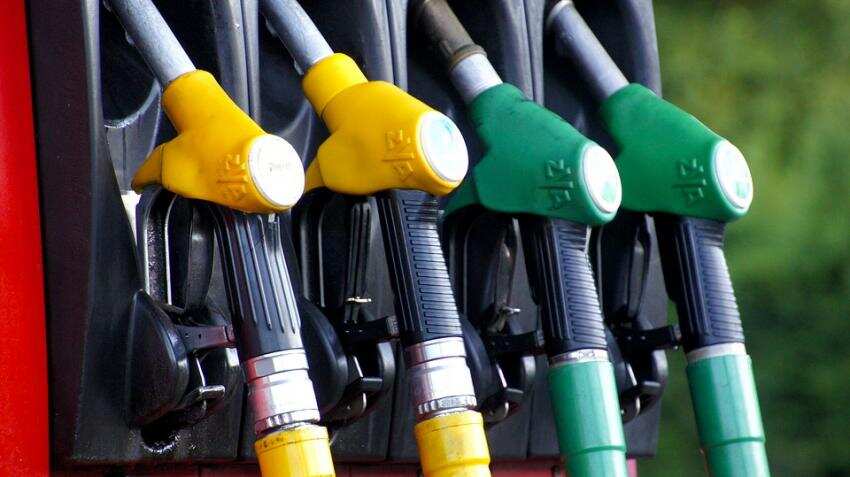
Petrol, diesel prices: The start of 2018 has turned out to be not really good for Indian citizens, when it comes to paying fuel prices, as the amount they pay for 1 litre petrol is near four-year high. Talking about diesel prices well, then know that 1 litre of this product has reached an all-time high. The state-owned Oil Companies like Indian Oil Corporation (IOCL), Hindustan Petroleum Corp Limited (HPCL) and Bharat Petroleum Corp Limited (BPCL) usually derive final retail prices by commuting international crude basket, adding government’s excise duty and state’s value added tax (VAT). Since last year, petrol and diesel prices are linked with international market, and undergo daily revision in their valuation, however, what was supposed to be an helping hand for Indian citizen has now become a nightmare. Let’s understand what is cooking with our petrol and diesel prices, and how you may end up paying a higher amount on them.
On Wednesday, petrol price was valued at Rs 72.90 per litre in New Delhi, Rs 75.63 per litre in Kolkata, Rs 80.77 per litre in Mumbai and Rs 75.61 per litre in Chennai, as per data given by IOCL. The data also added that, the diesel price on the day, was available at Rs 63.77 per litre in New Delhi, Rs 66.46 per litre in Kolkata, Rs 67.91 per litre in Mumbai and Rs 67.25 per litre in Chennai.
It needs to be noted that, petrol prices have risen to a four-year high currently. If we look at IOCL previous data, petrol from December 31 till date, price has risen by Rs 3.41 per litre in New Delhi, Rs 3.35 per litre in Kolkata, Rs 3.37 per litre in Mumbai and Rs 3.59 per litre in Chennai.
In 2018 so far, New Delhi has touched high of Rs 73.38 per litre, Kolkata of Rs 76.07 per litre, Mumbai of Rs 81.24 per litre and Chennai of Rs 76.12 per litre - the same level was recorded in 2014.
Diesel prices from December 31 till date have increased by a much higher rate - reaching an all-time high. Diesel price has surged by Rs 4.58 per litre in New Delhi, by Rs 4.59 per litre in Kolkata and Rs 4.90 per litre in Chennai. Mumbai has seen massive rise by Rs 5.12 per litre in their diesel product.
Diesel in 2018 so far, has touhced all-time high of Rs 64.22 per litre in New Delhi, Rs 66.89 per litre in Kolkata, Rs 68.39 per litre in Mumbai and Rs 67.73 per litre in Chennai.
According to HDFC Securities report, Petrol marketing margins restored to and higher than their normalized level of Rs 2.5/l. Currently, gross marketing margins on Petrol are Rs 2.8/l compare to Rs 0.75/l in December.
Diesel marketing margins restored to and higher than their normalised level of Rs 2.3/l. Currently, gross marketing margins on Diesel are Rs 3.3/l compare to Rs 0.77/l in December.
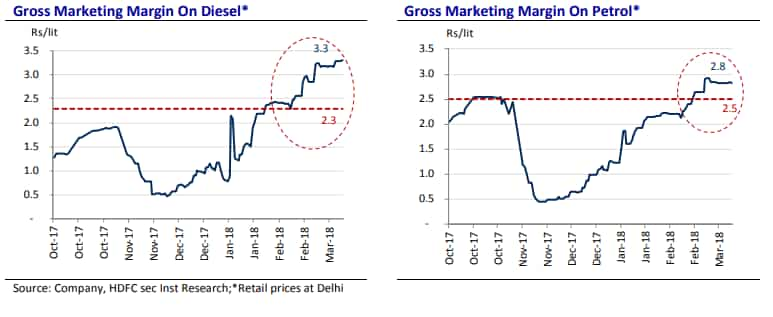
Furthermore, Indian Oil on a daily basis, release the break-up of how they derive final retail prices for fuel products.
If we look for petrol price in New Delhi, crude oil prices account for 47.09% in final retail break-up, while government’s taxes like excise duty and VAT hold 52.91% in the petrol prices.

In case of diesel prices in New Delhi, international crude oil accounts for 57.28% in the final retail prices, while government’s taxes hold 42.72%.

Currently, global crude prices have major impact on our petrol and diesel prices, which is why, Indian state-owned Oil companies are forced to increase the prices in the two product.
On Wednesday, U.S. WTI crude futures were at $64.73 a barrel by 0611 GMT, down 52 cents, or 0.8 percent, from their previous settlement. Brent crude futures were at $69.66 per barrel, down 45 cents, or 0.6 percent.
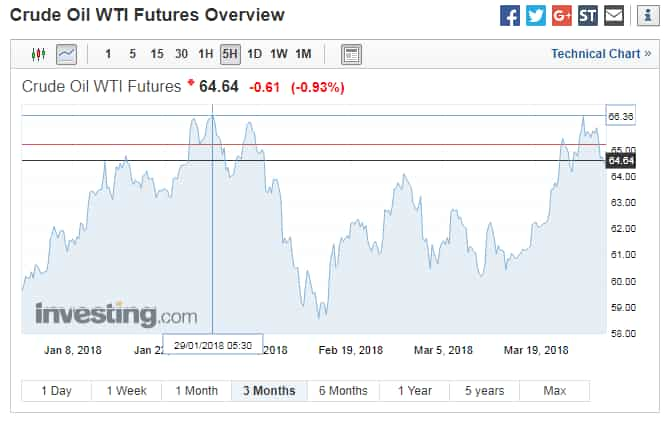
However, both the commodity have potential to rise ahead. US WTI crude which traded near $60 per barrel by end of December 2017, have rose by nearly 11% and clocked high of $66.36 per barrel.
While US brent crude which traded near $66-mark by end of December 2017, grew by nearly 7% and has also touched over $70-level so far in 2018, data seen by investing.com indicated.
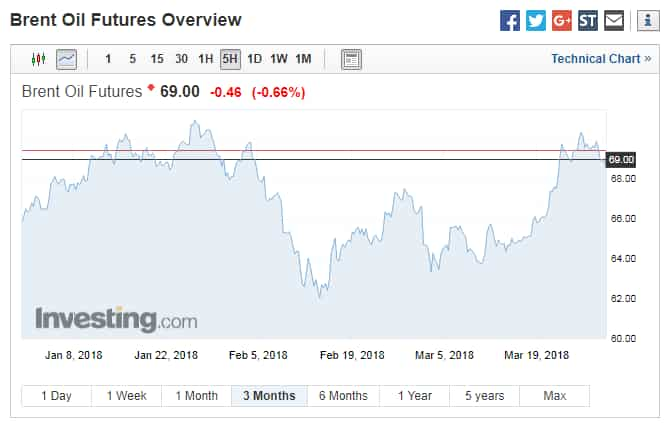
Nilesh Ghuge analyst at HDFC Securities says, "Concerns on weak marketing and refining margins, rising crude prices, and lower budgetary allocation for petroleum subsidy have hit Oil Marketing Companies (OMCs)."
Vishnu Kumar and Praveen Narayanan analysts at Spark Capital said, “Our simple narrative on Oil Marketing companies is that “Higher Crude prices are bad for business”. We have been negative on the OMC pack (except IOCL on low valuations) largely on our forecast of higher Brent crude prices ($65/bbl est vs then price of $<50/bbl) which has mostly played out.”
The duo added, “we see Crude fundamentals justifying prices in the range of $65-$70/bbl – Shale producers are incrementally focusing on FCF justified production with break even around $55-$60/bbl and we think this would act as a floor.”
They further added, “we forecast crude prices of $65/bbl for FY19E and see serious upside risks to our estimates. Based on scenario analysis, we believe the OMC pack is now factoring in $65/bbl crude prices and could see additional 20% downside if the range shifts to $75+/bbl prices.”
The higher crude price comes as a negative outcome for India, as the government is impacted by this trend in two ways.
Firstly, the government earns substantial revenue from petro-products through taxation, as they have been kept out of the Goods and Services Tax (GST) regime. States are also able to levy variable taxes as a result of which prices vary across states.
Secondly, the government also provides a subsidy for fuel products in order to buffer against prices.
HDFC Securities expect total petroleum subsidy and under recovery in FY19 would be Rs469.7 billion (based on crude oil price assumption of USD65/bbl).

In the union budget, the Finance Minister Arun Jaitley made a provision for petroleum subsidy and under recovery of Rs 248.4 billion - a shortfall of Rs221.3 billion.
Ghuge says, “Insufficient allocation of petroleum subsidies could be perceived as a potential subsidy risk for the upstream and downstream companies.”
Petrol and diesel are the mainstay for OMCs, accounting for about 51% of the total petroleum product consumption in India as of FY17. While the sector is among major revenue provider to government, by 23% by end of FY17.
Thus, with the higher crude prices, there is limited room for reduction in petrol and diesel prices, which would mean you facing uptrend in your purchase of petrol and diesel.
About 40 million consumers on an average basis, come to retail outlets across the country on a daily basis. In India, there are nearly 60,000 fuel retail outlets and the size of the entire petroleum industry is somewhat Rs 6.5 lakh crore.
Get Latest Business News, Stock Market Updates and Videos; Check your tax outgo through Income Tax Calculator and save money through our Personal Finance coverage. Check Business Breaking News Live on Zee Business Twitter and Facebook. Subscribe on YouTube.
RECOMMENDED STORIES
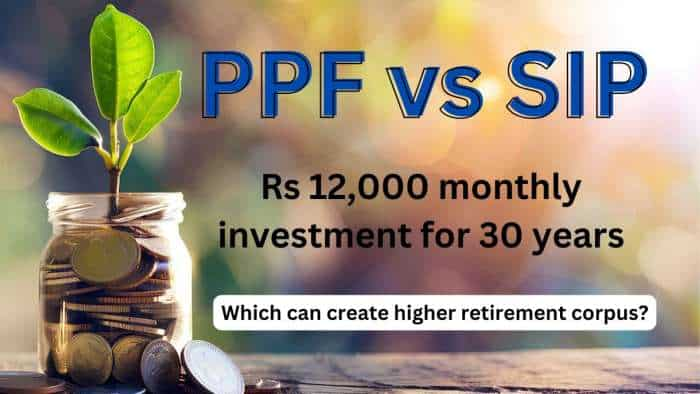
PPF vs SIP: Rs 12,000 monthly investment for 30 years; see which can create higher retirement corpus

Power of Rs 15,000 SIP: How long it will take to achieve Rs 7 crore corpus? See calculations to know
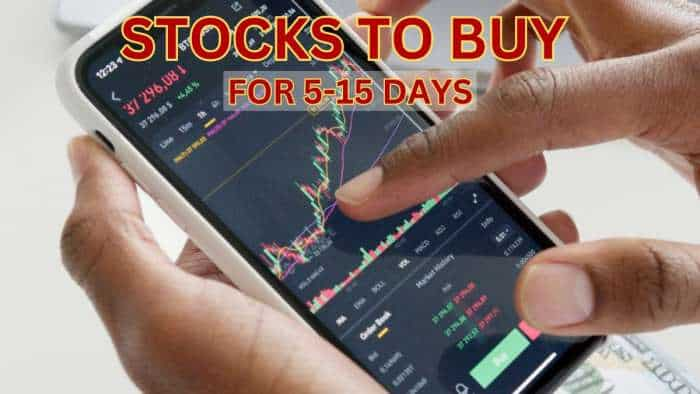
Largecap, Midcap Stocks To Buy: Analysts recommend buying L&T, Tata Motors, 3 other stocks for 2 weeks; check targets
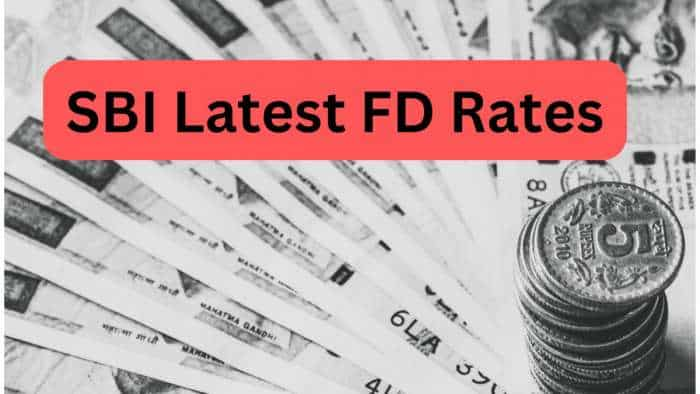
SBI Latest FD Rates: PSU bank pays these returns to senior citizens and other depositors on 1-year, 3-year and 5-year fixed deposits
03:17 PM IST








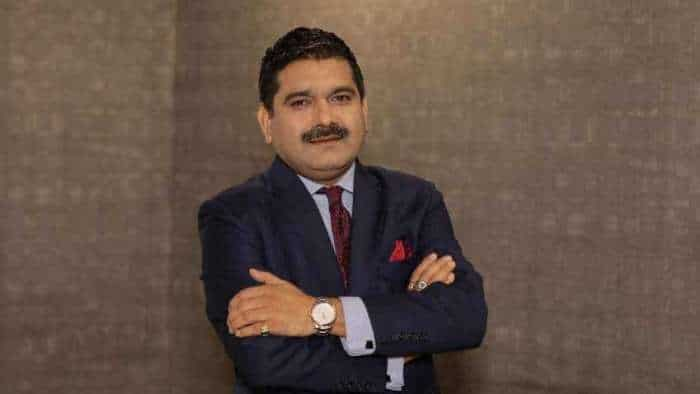

 Petrol, diesel to get costlier in Karnataka as government hikes sales tax on fuel
Petrol, diesel to get costlier in Karnataka as government hikes sales tax on fuel LPG price cut by Rs 100: Will govt slash prices of petrol and diesel?
LPG price cut by Rs 100: Will govt slash prices of petrol and diesel?  Petrol prices highest in Rajasthan because of taxes imposed by Congress govt, says Petroleum Minister Hardeep Singh Puri
Petrol prices highest in Rajasthan because of taxes imposed by Congress govt, says Petroleum Minister Hardeep Singh Puri Petrol-Diesel Prices Today, January 9: Check latest fuel rates in Delhi, Bengaluru, Mumbai, Chennai, Noida, Chandigarh, and other cities
Petrol-Diesel Prices Today, January 9: Check latest fuel rates in Delhi, Bengaluru, Mumbai, Chennai, Noida, Chandigarh, and other cities Petrol-Diesel Prices Today, December 21: Check latest fuel rates in Bengaluru, Chennai, Mumbai, Delhi, Noida, Chandigarh, and other cities
Petrol-Diesel Prices Today, December 21: Check latest fuel rates in Bengaluru, Chennai, Mumbai, Delhi, Noida, Chandigarh, and other cities